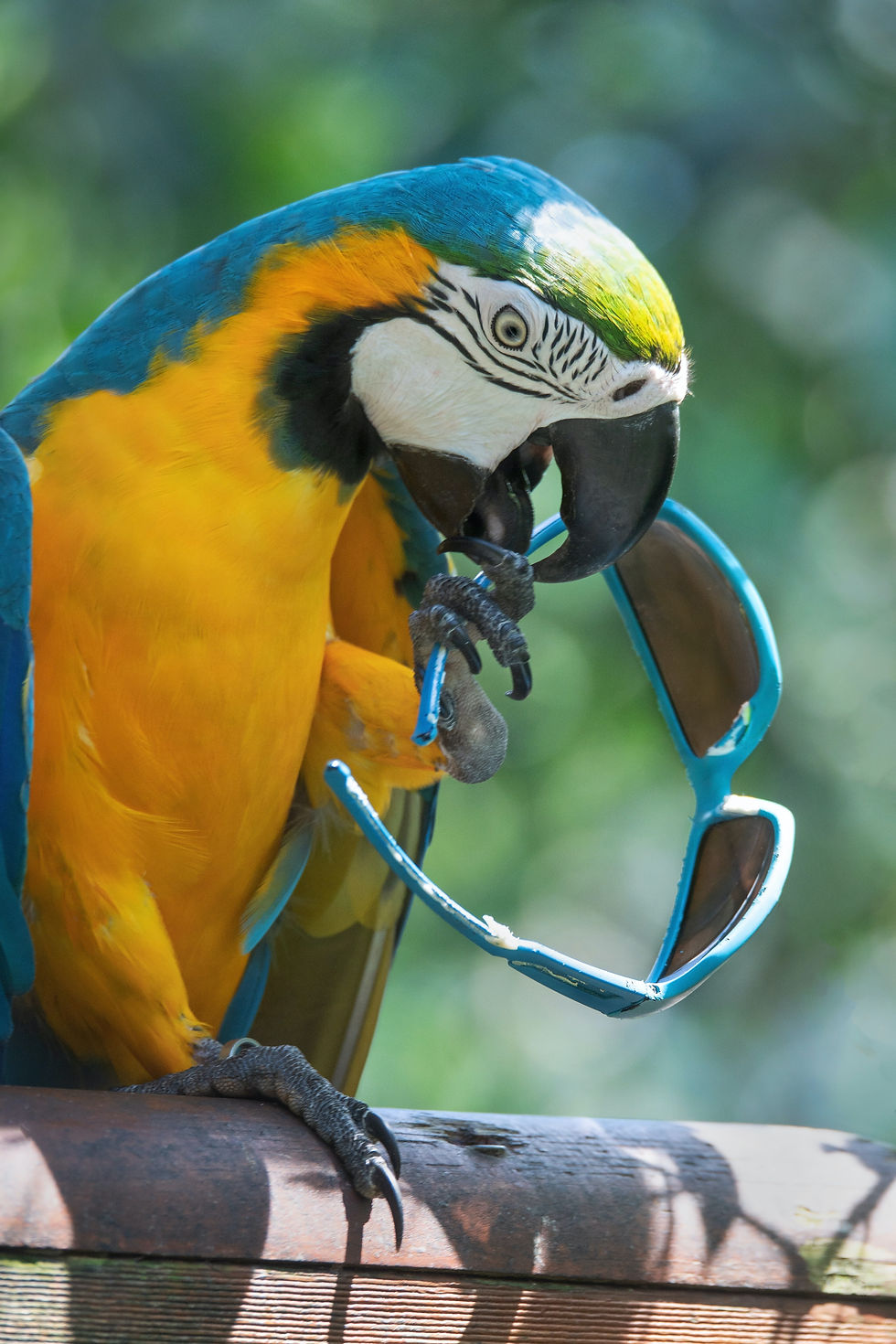Zygodactyl Feet: Nature’s Ingenious Grip in Parrots
- naturallycaptive
- Jul 15
- 3 min read
Parrots and a few other species of birds have bizarre looking feet. These funny little feet enable them to do things that most other species of birds aren't able to.

Have you ever noticed how parrots use their feet almost like hands, how woodpeckers cling to tree trunks, or how owls grasp their prey with iron-clad precision?
These abilities come from a fascinating toe arrangement known as zygodactyl feet—an ingenious feature shared by several bird groups.
What Are Zygodactyl Feet?
Zygodactyl literally means “yoked toes.” It refers to a foot with two toes pointing forward (digits 2 & 3) and two pointing backward (digits 1 & 4).
Unlike the typical three-forward, one-backward anisodactyl arrangement, this X-shaped design gives birds extra grip and dexterity—all thanks to the oppositional placement of their digits.
Which Birds Have Zygodactyl Feet?
Parrots & Related Birds
Parrots use their zygodactyl feet like tiny hands—gripping toys, branches, and even
food to bring up to their beaks with incredible skill. This dual backward-forward toe setup is key to their ability to climb and manipulate objects.
Woodpeckers
Woodpeckers press their stiff tail feathers against trunks while zygodactyl feet keep them securely anchored—enabling them to drum, excavate holes, and forage vertically .
Owls & Raptors
Owls—and similarly specialized raptors like osprey—use two-forward, two-back grips to secure prey with jaw-dropping strength. Great horned owls can apply 200 to 500 psi, enough to even sever spines
Cuckoos, Ospreys & Others
Ospreys are known for reversible outer toes, allowing them to switch between three-in-front/one-back and two-in-front/two-back configurations when catching slippery fish. Similarly, some cuckoos and mousebirds also sport this grip-enhancing foot layout.
How Zygodactyl Feet Function in Daily Life
Strong Grip
Across multiple bird families, two-back, two-front toe arrangement produces a tension-lock grip—crucial for perching, climbing and reaching difficult places to forage.

Precision Movement
In parrots, zygodactyl feet act like mini hands, bringing food to the beak and offering fine-tuned control.
Perching & Climbing
Woodpeckers combine zygodactyl feet with stiff tail bracing to climb vertical surfaces effortlessly.
Zygodactyl Feet vs. Other Toe Arrangements
Anisodactyl (3 front, 1 back): Typical for songbirds—great for standard perching.
Zygodactyl (2 front, 2 back): Offers enhanced grip and dexterity for complex tasks.
Pamprodactyl / Heterodactyl / Syndactyl: Less common—used in swifts, trogons, etc., for specific functions like clinging or splaying.
Ways to Care for Your Bird's Zygodactyl Feet
Perch Variety & Size

As a general rule, perches should allow toes to wrap about halfway around. Narrow perches strain feet; overly wide ones cause uneven pressure.
Use natural wood branches of varying diameters that match your parrot’s foot span. This variation strengthens foot muscles, prevents arthritis, and supports a healthy grip
Mix straight and curved perches—curved designs mimic natural branches and encourage shifting grip patterns for better circulation
Rough bark or textured branches provide tactile surfaces for nail filing and simulate natural environments
Rope perches offer softness and flexibility—great for movement—but they must be monitored for fraying hazards
Placement & Layout
Stagger perches at different heights and angles to promote climbing and flying
Do not clutter your bird's cage with too many perches.
Avoid placing perches directly above food/water to prevent soiling
Include flat platform perches, especially beneficial for resting birds or those with foot issues
Supportive Additions
For elderly or injured birds, try soft-wrapped perches: wrap fleece or memory foam around a perch, then cover with vet wrap for grip and comfort
Vet-wrap customization allows changing diameter and texture easily and keeps perches clean.
Conclusion
Zygodactyl feet provide birds with a strong, precise, and versatile grip—enabling everything from parrot dexterity, woodpecker climbing, to owls gripping prey. Appreciating this toe arrangement adds a richer layer to bird-watching, pet care, and general bird appreciation. Keep an eye on those toes—they're truly nature’s ingenious grips!

















Comments